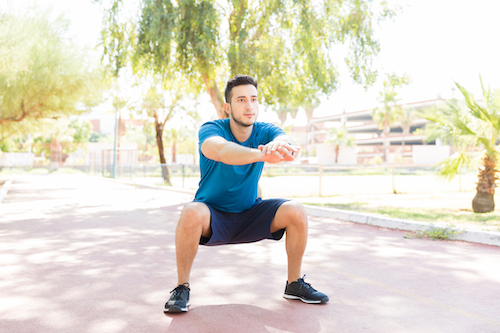
New Year, New You: Tips for Better Health
As we begin the new year, many of us make resolutions to get fit. It’s especially important for those with inherited bleeding disorders to be physically active not only to lose weight but also to:
- Boost overall physical fitness
- Reduce the risk of bleeds by strengthening joints and muscles
- Increase balance and coordination
- Instill a spirit of participation and involvement
- Improve sleep
- Decrease the potential of becoming depressed due to having a chronic condition
- Improve self-esteem
- Reduce the risk of developing other chronic health conditions like diabetes, high blood pressure, heart disease and more
What Is the Right Routine for You?
To find an exercise regime that’s best suited for you, speak with your Hemophilia Treatment Center physical therapist. He or she will help you find the right type of exercise and frequency of workouts.
Also, you can review Be Active Your Way: A Guide for Adults from the U.S. Department of Health and Human Services and Play It Safe from the National Hemophilia Foundation to help you get started.
Other tips that we provide in our own Hemophilia, von Willebrand Disease & Platelet Disorders Handbook, include the following
- Write down your plan. Describe how to do each exercise and the number of repetitions you intend to do.
- Start with a few exercises that use different movements. At first, only do a few of each exercise and don't work out too long. You may experience sore muscles if you are not accustomed to regular exercise. As your program becomes easier, slowly add more of each exercise. Exercise routines for people with hemophilia sometimes start with isometric exercise, move to active exercises, and then add resistive exercises. Your program should include exercises that make you stronger, more flexible, and able to do things longer (endurance). You'll need to have special exercises for problem joints. Sports such as swimming and riding a bike are good because they repeat movements as well as build stamina. Weightlifting may be too stressful for your joints. Talk to your physical therapist and doctor before adding weights to your exercise routine.
- You will get the best results if you exercise at least three times a week (or as much as your physical therapist says).
- When you stop your exercise program for any reason, you may find it painful or even have a bleed if you start back at the same level. It's better to start back at a lower level and then work up to where you were before.
- Unless directed by your doctor or physical therapist, you need to move your joints every day. This is especially important for joints that have been damaged. Bend, flex and stretch each joint through all its movements.
- Schedule routine check-ups with your physical therapist to assess the success of your program and make any needed changes.
Should You Exercise after a Bleed?
It is not recommended to exercise a muscle or joint if it is bleeding. Exercise the other parts of your body while the joint or muscle heals. Only begin to exercise where you experienced a bleed once you can do so without pain. Keep in mind, however, that the longer you wait to begin, the more likely it is that the joint will be stiff or that the muscle will have shrunk. After a serious bleed, ask your doctor how long you should wait before starting your exercises again.
About weightlifting
The physical therapist can give you advice about when it is helpful and safe to use weights. Children should not do heavy weightlifting because it can damage immature bodies. However, doing repetitions with light weights can help a child build the kind of muscles that protect joints the best.
As always, follow the advice of your doctor and physical therapist regarding any exercise program.
